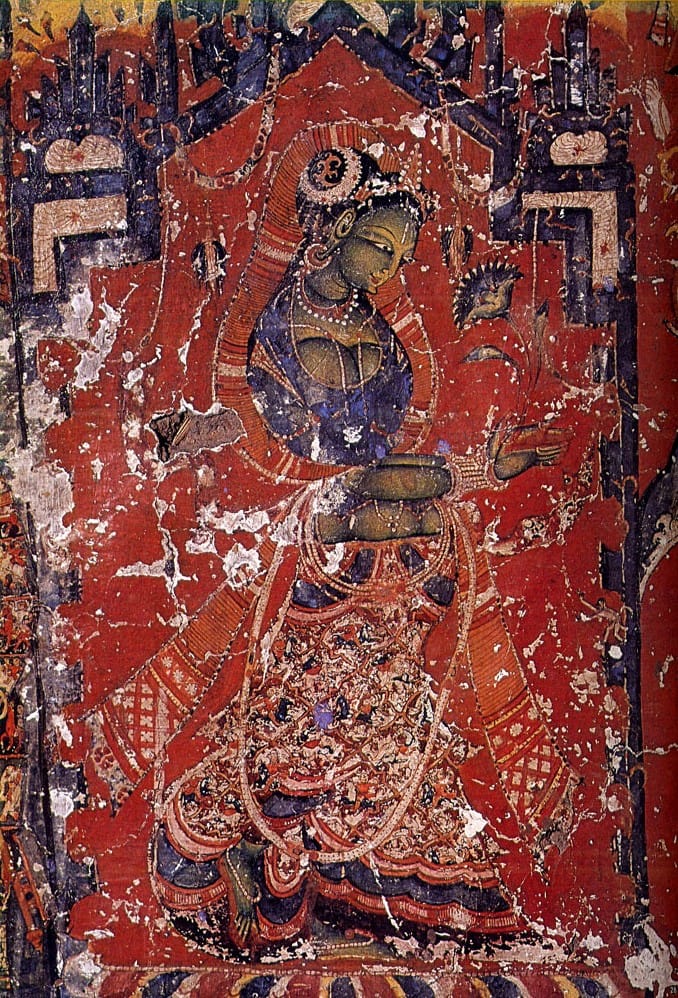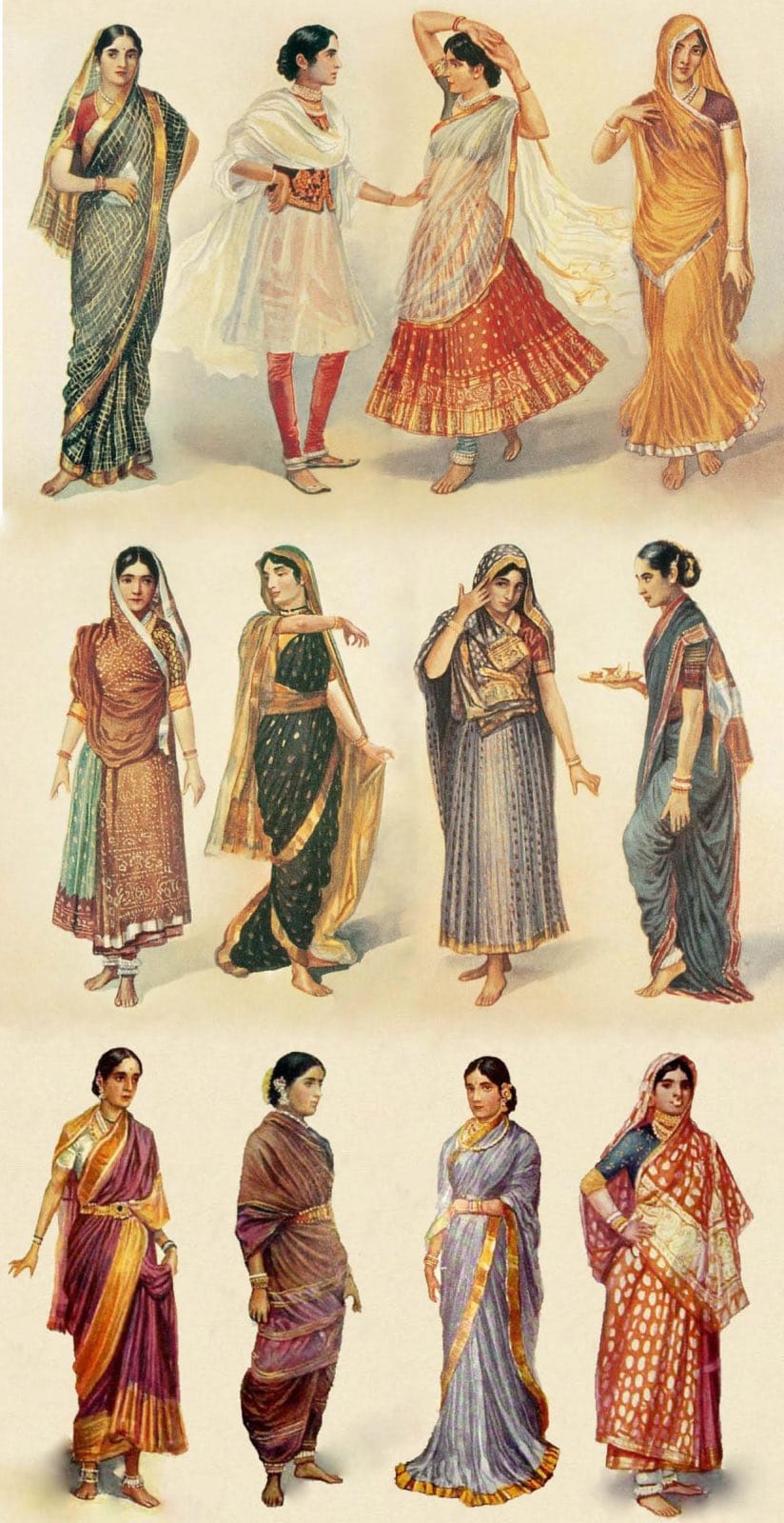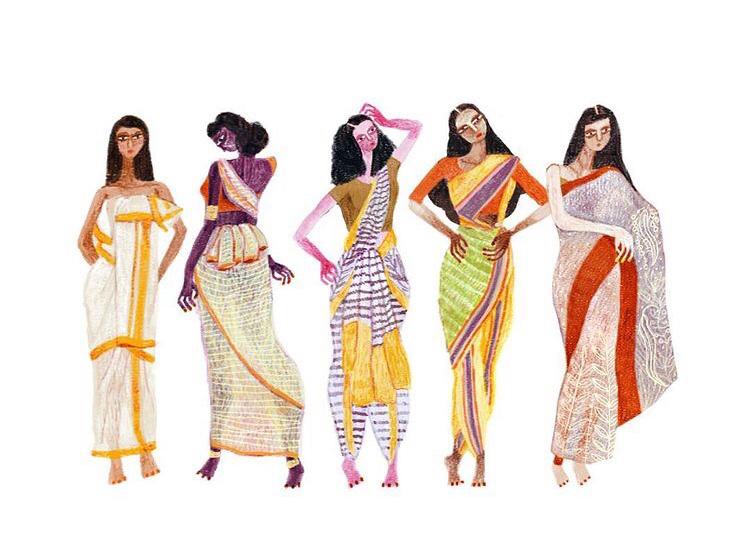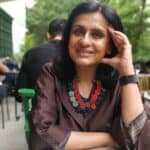28 May The Genesis of Draped Apparel in India
Draped Apparel: In our first blog in this series, we talked about the Indian tradition of wearing unstitched clothing from pre-Vedic times, possibly because applying a needle to cloth was believed to be polluting.

A kid in a langot, still worn in India by traditional wrestlers. Image Source: https://www.danielmalikyar.com/kushti-india/
Because of this belief, and probably because of the climate, India has always had a tradition of draped apparel, starting from the langot, a rectangular cloth worn as underwear. Interestingly. I remember my grandfather still wore a langot until the 1960s, as I remember long strips of cloth drying on the washing line.
The genesis of draped apparel

Terracotta figure in sari like antariya. Circa 200 BCE. At the Ashmolean Museum
The langot is where it all started in the Indus Valley Civilisation when apparel in India was largely unisex. The cultivation of cotton meant that there was enough clothing available for everyone. Excavations in the Pre Harappan site of Mehrgarh in Baluchistan have revealed seeds and fibers of cotton dating from 6000 BC. Though no cloth has survived, spindle whorls at sites throughout the Indus valley imply that weaving took place. Men and women wore a lower garment called an Antariya, which had evolved from the langot. In addition, women wore a chest band, called a stanapatta, which was knotted at the back. Women often wore another piece of cloth, called an uttariya, draped around the shoulder and over the head. The lower garment could be worn in two ways, either as a leg covering or passing between the legs, for the facility of movement.


Over history, the uttariya evolved into the dupatta, the antariya into the dhoti and the lungi. A combination of the two evolved into the saree, which took its current form in the post-Mughal era. It is possible that the presence of the Greek in India during the reign of the Mauryas, influenced local draping styles. The stanapatta is mentioned in several texts, such as the 12th century CE Rajatarangini. It was perfectly acceptable as a brief and tight-fitting garment, sometimes worn with strings in the back and mainly just knotted. Over time, it evolved into the choli.

With the advent of the Mughals, and later the British, standards of modesty in India changed, and eventually, the blouse and the petticoat were introduced to be worn with the saree.


The Draped Apparel of India: The Saree
The saree is remarkable in the history of India, as a survivor of centuries, through which so much has changed, except the saree. This rectangular piece of cloth ( from the Sanskrit word Sati or strip of cloth) symbolizes Indian womanhood, a marker of rites of passage, a symbol of permanence. Here is what my friend Belaa Sanghvi said to me recently, “The saree is most sustainable if created well. I have my Grandmother’s saree. One size fits all. It can be worn by many in the family and passed on to the next generation. After it’s torn, they make godhdi out of it. Even when the outer cover is torn, it’s sandwiched between another layer. So it lasts for generations if used well.”


Remarkably, the saree is still worn in many parts of India, in the antariya style, exposing the navel, which in Indian thought is seen to be the source of life and creativity. This drape style is known as Nivi in Vedic literature and is the Ulta palla, with the pleats at waist level in the front.


Having said that, there are arguably more than 100 ways to drape the saree over the breadth of India, mostly to do with climate and geography. For instance, the women of the Konkan region spend much time fishing, and therefore their nine yd sarees are designed to drape between their legs and tie at the back for ease of movement. In keeping with their active life in the Western Ghats, the women of Coorg tuck the pleats at the back of the waist and secure the end of the saree over the right shoulder.



The saree is responsible for a massive part of India’s handloom and craft sectors, keeping them going at a staggering 11 million employees, according to recent estimates. Therefore, it is critical to Indian craft, and it is alarming that many of India’s young are abandoning it for western wear or the more accessible salwar kameez variations. Several designers have taken this seriously and experimented with material, drapes, and innovations like the saree gown. At the last Art Fair, I was charmed to see the ushers wear short khaki sarees with Doc Martens. Innovations like these are welcome to keep this 5000-year-old tradition of the drape as apparel alive.



AUTHOR BIO
Mira Gupta is a well-known curator and designer in craft-based luxury. She has had working stints with Fabindia, Good Earth, and Ogaan to promote the cause of craft. She is deeply interested in art, travel, architecture, and culture.
Read more articles by the Author HERE




Prasad Bidapa Bidapa
Posted at 02:56h, 06 JuneStunning article. Thoroughly researched and a must read for all students and followers of Indian Heritage Textiles.